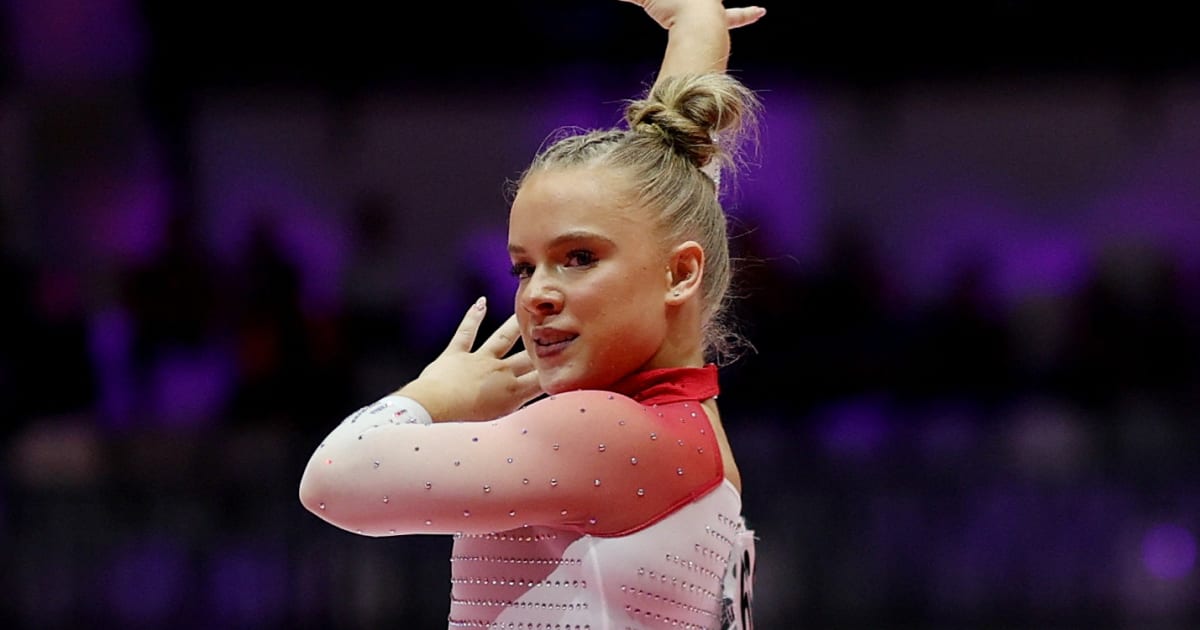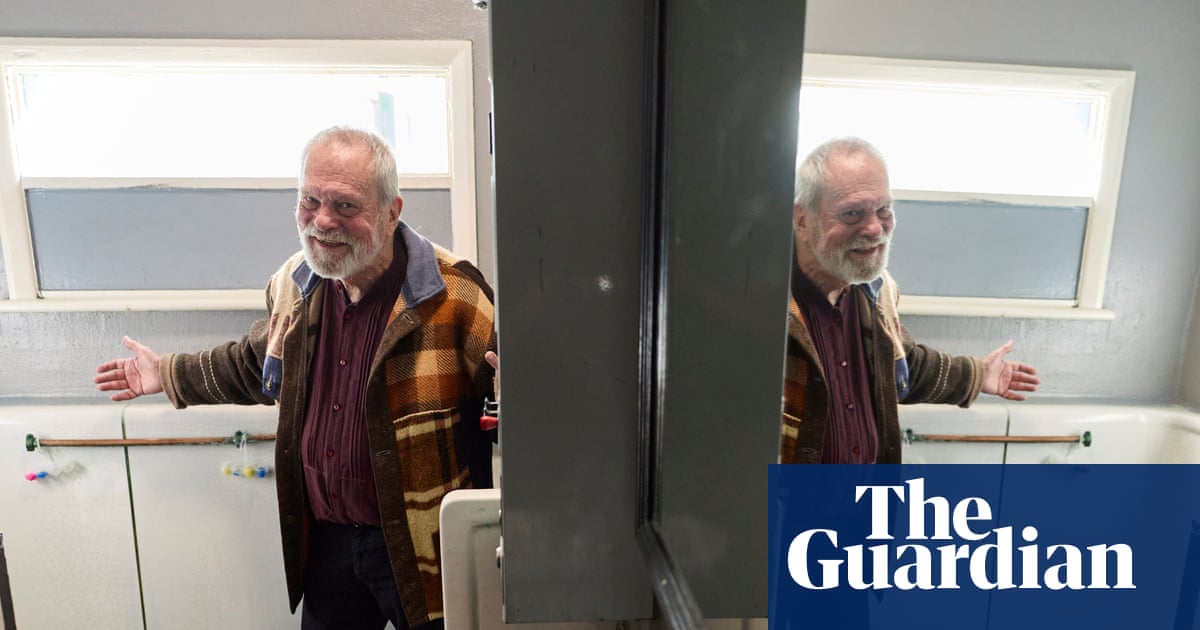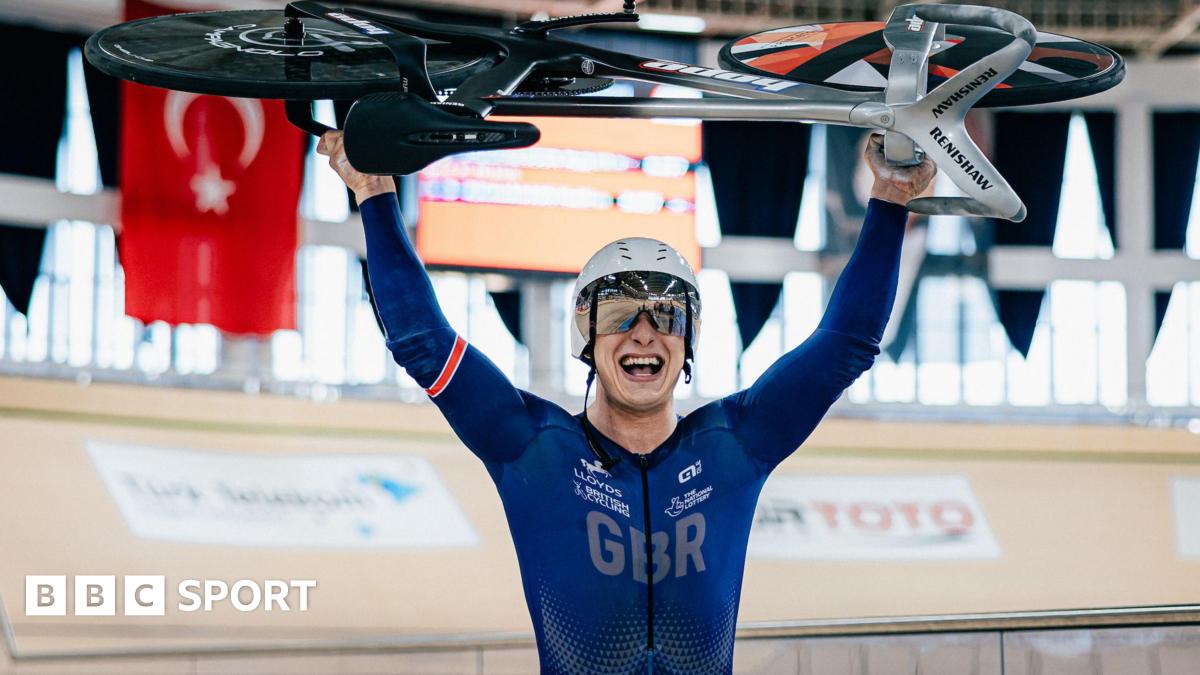Jacob Tusk,1,* Marina Antonia Salinas Canas,1,* Tarik F Haydar,1,2 Terry Dean1,3
1Center for Neuroscience Research, Children’s National Hospital, Washington, DC, 20010, USA; 2Department of Anatomy and Neurobiology, Boston University Chobanian and Avedisian School of Medicine, Boston, MA, 02118, USA; 3Department of Critical Care Medicine, Children’s National Hospital, Washington, DC, 20010, USA
Correspondence: Terry Dean, Center for Neuroscience Research, Children’s National Hospital, Washington, DC, 20010, USA, Tel +1-202-476-6817, Email [email protected]
Background / Objective: Down syndrome (DS) is the most common chromosomal disorder worldwide, and approximately ¾ of individuals with DS demonstrate multifactorial sleep disturbances, including sleep apnea. As the effects of chromosome 21 triplication are complex, mouse models may provide valuable insights into the causal mechanisms of disordered sleep in DS. Although the recently developed transchromosomic TcMAC21 mouse model offers the closest genetic similarity to human DS, its sleep-wake architecture is unexplored. We hypothesized that TcMAC21 mice would exhibit sleep disruption similar to human DS, specifically with increased wakefulness and sleep fragmentation compared to the euploid controls.
Methods: Using a non-invasive piezo-electric sleep recording system, we evaluated the sleep-wake architecture in male TcMAC21 (TS, n=9) and euploid (EU, n=9) male control mice under a 12-hour light/dark cycle. Analyzed metrics included: total sleep percentage, bout frequency, and bout length.
Results: Compared to EU controls, TS mice exhibited a significant reduction in sleep bout duration (− 29.0%, p = 0.02) during the dark phase, with primary effect during the first 8 hours, culminating in an overall decrease in total sleep percentage (− 24.2%, p = 0.04). The light phase did not demonstrate statistically significant changes in total sleep percentage or sleep architecture.
Conclusion: TcMAC21 mice demonstrated significant sleep fragmentation during the dark phase, potentially reproducing some aspects of sleep disruption in Down syndrome. Interestingly, these findings differed from descriptions of sleep in other DS animal models. Given the high degree of DS gene replication and non-mosaic nature of the TcMAC21 model, it may provide unique insight into the neurologic and anatomic mechanisms of sleep dysfunction in Down syndrome.
Introduction
Down syndrome (DS) is the most common chromosomal abnormality in humans and is caused by the presence of an extra copy of human chromosome 21 (Hsa21). This triplication leads to a multitude of clinical manifestations, including sleep disturbances. Sleep disorders in DS are common and multifactorial, with contributors such as obstructive and central sleep apnea and circadian dysrhythmia. Ultimately, DS patients experience poor sleep efficiency and excessive daytime sleepiness.1–6
Sleep architecture has been studied in multiple mouse models of DS that bear triplication of mouse chromosome regions that are syntenic to Hsa21. While triplication of mouse chromosome 16 (Mmu16), which mirrors a portion of Hsa21, causes fetal lethality,7 other models each demonstrate a unique sleep phenotype. Dp168,9 mice, which include triplication of the entire Mmu16, exhibit decreased sleep in both the light and dark phases.8 Meanwhile, Ts65Dn mice,10 containing a partial Mmu16 and partial Mmu17, show reduced sleep primarily in the dark phase.11 Ts1Cje mice, with a shorter region of triplication on Mmu16, display no baseline sleep differences but delayed sleep rebound after deprivation.11 Finally, the transchromosomic Tc1 mouse,7 which includes a fragmented mosaic of human chromosome 21 (Hsa21) including about 75% of the protein coding genes, shows sleep fragmentation during the light phase and increased sleep latency during the light-dark transition.12 These diverse sleep phenotypes are thought to be driven by each model’s distinct genetic composition, highlighting the importance of accurately recapitulating the human disorder’s chromosomal abnormality in animal models.
The newly developed transchromosomic TcMAC2113 mouse model offers a significant advancement for DS research. It replicates 93% of the protein-coding genes on Hsa21q, including key genes associated with DS.13 Furthermore, unlike the mosaic nature of the Tc1 model,7 TcMAC21 is non-mosaic,13 ensuring uniform trisomic genetic material across cells and enhancing the reproducibility of phenotypes. However, the sleep architecture of TcMAC21 mice has not yet been described. Given its close genetic resemblance to human DS, this study aims to characterize sleep patterns in TcMAC21 mice to assess their potential as a platform for exploring the etiology and consequences of sleep disruptions in DS. We hypothesized that TcMAC21 mice would exhibit sleep disruption similar to human DS, specifically with increased wakefulness and sleep fragmentation compared to the euploid controls.
Materials and Methods
Mice
All procedures and experimental design were approved by the Institutional Animal Care and Use Committee at Children’s National Hospital (Protocol 30786) and follows National Institute of Health (NIH) and Animal Research: Reporting of In-Vivo Experiments (ARRIVE) guidelines. Our vivarium is maintained at 72°F ±2°F, and the humidity range is 30–50%. Mice had unrestricted access to standard laboratory diet, water, and nesting squares and were maintained under a 12-hour light/dark cycle. The TcMAC21 line was originally acquired from Jackson Laboratories (Strain 035561). As the TcMAC21 line has been reported to have a high variation of fecundity,14 which is anecdotally consistent with our experience, all TcMAC21 females were reserved for breeding purposes and not available for use in this study; a convenience sample of 10 male TcMAC21 (TS) mice and 10 male euploid (EU) littermates was used. Given the light/dark phase-specific findings noted on previous studies of DS mouse models,7–11 an a priori power analysis based on variability in murine sleep noted in our previous experience15 suggested that n=10 would provide adequate power to detect a 10% decrease in 12-hr total sleep time with 95% certainty, and would exceed the numbers in previous sleep reports in DS mouse models.11 Data were collected over 3 separate litters of mice with as many as 8 mice recorded at a time; each recording run included simultaneous recordings of mice of both genotypes, randomly assigned to sleep chambers within a light-tight, sound-proof cabinet (Actimetrics). The analyzed mice were 6.3 ± 1.2 weeks (TS) and 7.1 ± 0.9 weeks (EU) old at the time recording.
Sleep Recording and Processing
The use of a non-invasive sleep recording system limits the potential for surgery-related factors (eg recovery from anesthesia, wound healing, inflammatory response) to influence changes in sleep-wake behavior, which is a consideration in the TcMAC21 mice that bear a global transgenic modification. All mice underwent a 5–7 day acclimation period, during which they were individually housed in the piezo-electric chambers (Signal Solutions) with free access to food and water. Up to 8 chambers are housed within a circadian cabinet that would be used for non-invasive sleep recording. After the acclimation period, those chambers would then continuously collect motor activity for 48 hours without disruption. The activity thresholds for distinguishing sleep and wake states were determined using commercially available SleepStats 2020 (Signal Solutions), which has previously shown 89% sensitivity and 96% specificity for wake versus sleep (NREM + REM);16–18 however, this system’s sensitivities/specificities for distinguishing NREM and REM sleep are limited16 and were not utilized in this study. Data were exported as CSV files and analyzed for sleep-wake epochs, with checks for sensor errors or electrical interference. For each mouse, two consecutive 24-hour light/dark (L:D) cycles were analyzed, generating metrics including sleep bout length histograms and percent sleep. Of note, the TcMAC21 mice did bear distinguishable physical characteristics noted previously,13 including abnormal facies and shortened ears, making blinding investigators to mouse genotype impossible as the investigators interacting with the mice were the same as those collecting and analyzing the sleep data; however, the piezosleep sleep analysis system does not require user input to calculate each of these metrics, limiting the possible introduction of researcher bias in the analysis.
Data Analysis and Availability
Statistical analyses of comparisons were conducted using Prism (GraphPad version 10.1). Our primary outcomes of differences in total light and dark phase sleep chosen given the previous histories of finding light- and dark-specific changes in Down Syndrome mice.7–11 After applying Grubbs’ extreme studentized deviate testing (α=0.01) to the 24-hr and light/dark phase total sleep times, two mice were identified as statistical outliers and removed from all analyses: 1 EU that slept 43% less than the group average, 1 TS that slept 58% above the group average; at the time of the recordings no mice were observed to have been ill by appearance or gross motor behaviors. For the remaining mice (9 TS, 9 EU), no further outliers were removed from any analyses. Twenty-four hour, light, and dark total sleep percentages were analyzed via unpaired T-tests. Evaluation of sleep architecture (sleep percentage, sleep bout duration, sleep bout frequency) in 4-hour bins were conducted by two-way repeated measures ANOVA followed by comparisons between genotypes (EU vs TS) per bin; false discovery correction for multiple comparisons was conducted as per Benjamini-Krieger-Yekutieli procedure.19
Results
TcMAC21 (TS) mice exhibited a statistically significant reduction in 24-hour total sleep percentage relative to euploid (EU) controls (mean ± SD: 42.8 ± 8.3% and 50.1 ± 4.2%, respectively; p = 0.04; Figure 1A). This difference was accounted for primarily by a significant decrease in dark phase sleep (26.6 ± 6.3% vs 35.1 ± 9.6%, respectively; p = 0.041), with a non-significant reduction during the light phase (59.2 ± 12.5% vs 65.1 ± 5.6%; p = 0.21). Because a previous animal DS model demonstrated a sleep phenotype isolated to the first half of the dark phase,12 we next evaluated sleep metrics in 4-hour intervals (Figure 1A). For total sleep percentage, genotype demonstrated a significant effect (p=0.041) while time of day (p=0.10) and their interaction (p=0.62) did not. Pairwise comparisons identified decreased sleep during the first four hours of the dark phase (ZT 1200–1400; p=0.04), but ultimately none were statistically significant after correction for false discovery rate (Figure 1A). Analysis of the light phase suggested only significant effects of time of day (p<0.001) without an effect of genotype (p=0.21) or an interaction between genotype and time of day (p=0.84).
|
Figure 1 Comparison of sleep architecture in TS and EU mice. (A) (left) Sleep expressed as a percentage of total time for 24 hour and 12 hour periods. TS mice (magenta) show reduced sleep compared to EU controls (green) when measured over 24 hours, primarily due to a decrease during the dark phase (indicated by horizontal black bars). (right) Sleep expressed as a percentage of 4-hour intervals throughout the 24-hour day. TS mice showed trends towards reduced sleep during the first third of the dark phase (ZT 1200–1600). (B) Mean sleep bout duration for each 4-hour interval throughout the 24-hour day. TS mice (magenta) show reduced sleep bout duration sleep compared to EU controls (green) during the first 8 hours of the dark phase (ZT 1200–1600, ZT1600-1800). (C) Mean sleep bout frequency for each 4-hour interval throughout the 24-hour day. For all panels, Tukey box plots indicate median and interquartile range (IQR) (via box) and minimum/maximum up to 1.5x the IQR above/below the 25%ile and 75%ile, respectively (via whiskers); outliers represented by individual points. Individual ZT’s are marked the center of a four-hour interval. For all experiments, n = 9 for EU, n = 9 for TS. Any statistically significant P-values are detailed.
|
We next considered sleep bout duration and frequency in 4-hour bins to characterize the changes in sleep architecture underlying the observed sleep differences. Genotype (TS vs EU) produced a significant decrease in mean sleep bout duration during the dark phase (240.9 ± 81.5 vs 339.2 ± 80.5 s, respectively; p=0.02; Figure 1B), while the factors time of day (p=0.07) and their interaction (p=0.66) did not. Pairwise comparisons revealed significantly decreased mean sleep bout duration in TS mice during the first 8 hours of the dark period (ZT 1200–1600: 189.0 ± 66.0 vs 301.0 ± 108.7 s, p = 0.02; ZT 1600–2000: 214.0 ± 67.2 vs 340.1 ± 132.6 s, p=0.03), without an effect during the last 4 hours (ZT 2000–2400: 376.4 ± 124.7 vs 319.7 ± 207.2 s, p=0.49). Conversely, no significant effects were seen on mean bout length (Figure 1C) during the light phase (genotype p = 0.49, time of day p = 0.12, interaction p = 0.53). Similarly, no significant differences were found in the analyses of the sleep bout frequencies in either the dark or light phases (dark: time of day p = 0.29, genotype p = 0.76, interaction p = 0.59; light: time of day p = 0.45, genotype p = 0.67, interaction p = 0.33).
Discussion
The TcMAC21 (TS) mice demonstrated significant alterations in sleep-wake architecture, most notably driven by a decrease in sleep bout duration during the dark phase, the primary active period for mice. As no compensatory changes in bout frequency were observed during the dark phase, the degree of sleep loss over the 12 hours remained significant. This contrasts with sleep behavior during the primary resting (ie light) phase, which may have trended towards comparatively smaller decreases in overall sleep time and sleep bout duration, but did not reach statistical significance. When compared to other DS mouse models (ie Dp16, Ts65Dn, Ts1Cje, Tc1), the dark-phase-specific decrease in sleep of TcMAC21 mice most closely resembles the sleep behavior of the Ts65Dn model. However, Ts65Dn mice also exhibit an extended period of wakefulness during the first 6 hours of the dark phase, unlike the TcMAC21 mice slept for ~21% during ZT 1200–1600; they both demonstrated shortened sleep bouts when they did sleep during the dark phase. Tc1 mice do demonstrate sleep fragmentation similar to TcMAC21 mice, but the effects are primarily observed during the light phase. These differences highlight the variability in sleep phenotypes across DS mouse models, suggesting that sleep disturbances in trisomy 21 are likely polygenic in origin, with different combinations of triplicated genes contributing to varying phenotypic outcomes (summarized in Table 1).
 |
Table 1 Comparison of Baseline Sleep Architecture Findings Between Mouse Models of Down Syndrome
|
The reduction in sleep bout length observed in TcMAC21 mice is consistent with sleep fragmentation. However, the exact cause of sleep fragmentation in these mice remains unknown. As human DS is associated with obstructive and central sleep apneas, it is possible that the TcMAC21 mice could be experiencing a similar phenomenon. We and previous reports of the TcMAC21 mice have noted changes in craniofacial development, including shorter and wider snouts,13 therefore a contribution of altered airway anatomy to disordered breathing during sleep is possible. We predict that future studies employing whole body plethysmography may determine the roles of obstructive or central hypoventilation to the dark phase disturbances we observed. Furthermore, simultaneous incorporation of polysomnography would also improve upon our system’s limitation being unable to differentiate NREM and REM sleep. There are at least two benefits of polysomnography in this mouse model. The first is that it will be necessary to determine if the shortened sleep bouts seen in the TcMAC21 mice prevent normal quantities of REM sleep, similar to human patients.20 Should the murine sleep behavior prove consistent with the human disorder, then the TcMAC21 mouse may be a useful platform for further investigation of the mechanisms of disordered sleep as well as testing new therapeutic strategies. The second is to provide increased sensitivity for changes in sleep that may have evaded detection by our piezoelectric system. For instance, we noted consistent albeit non-significant trends towards less total sleep percentages in the light phase at a smaller magnitude than our dark-phase findings. Use of polysomnography will provide a more definitive characterization of sleep-wake balance during that phase, determining if the sleep phenotypes are truly isolated to the dark phase.
The TcMAC21 mouse presents an opportunity to dissect the contributions of sleep disruption, itself, to the greater neurodevelopmental pathophysiology in DS. For instance, sleep disturbance in human DS is associated with impairments in expressive language development.21 The TcMAC21 model may be able to address the role of the sleep phenotype, itself, on communicative ultrasonic vocalizations.22 Similarly, the TcMAC21 mice demonstrate overexpression of amyloid precursor protein in the hippocampus as well as significant learning and memory deficits on behavioral testing,13 which may model the increased susceptibility for dementia in human DS.23 However, it is also known that sleep fragmentation, itself, may contribute to this type of pathophysiology.24,25 Using TcMAC21 to further investigate a causal role for sleep disruption in neurodegeneration in the human DS population provides an avenue for developing therapeutic strategies.
We are aware of several limitations of our study due to experimental design. At the time of our experiments, the TcMAC21 mice available for prolonged sleep studies were few and included only male mice of a limited age range, described above. Expanding the sample size would provide for more statistical power to detect subtle sleep phenotypes, while the inclusion of females will be important to provide insight into the causes of the subtle sex and age differences DS patients, including males demonstrating increased N1 sleep26 as well as increased daytime sleepiness and napping behaviors compared to females.27 Finally, we also note that the average ages of our cohorts were approximately 1 week apart, with the EU mice being older than TS mice. One study comprehensively examining the influence of age on murine sleep-wake behavior during murine adolescence (postnatal day 15 through P87) did not find significant differences in total 24 hour sleep28 with age, making it less likely that age, itself was a confounding factor in our primary outcome. Similarly, NREM and REM sleep episode durations reached adult levels at P25 and P41, respectively, making it less likely that age governed the observed differences in sleep bout duration. Nevertheless, the impact of TcMAC21 on age-related changes in sleep would be of importance to investigate, first during adolescence given the subtle changes in NREM-REM balance that are seen during the first few months of development,28 as well as during longer time intervals (~12 months) during which there are gross changes in sleep architecture, including increased sleep during the phase.29
Conclusion
By recapitulating 93% of protein-coding genes from human chromosome 21q13, the TcMAC21 model represents one of the most accurate transgenic models of DS. Interestingly, in contrast to human DS sleep behavior, the TcMAC21 mice demonstrated significant sleep fragmentation, resulting in substantially decreased sleep during the dark phase, the primary wake time for mice. This model offers a unique platform for further investigate DS-related sleep disturbances, including sleep apnea, neuronal control of sleep, and long-term neurodevelopmental outcomes.
Data Sharing Statement
All data are available from the corresponding author upon reasonable request in accordance with journal guidelines.
Acknowledgments
We would like to acknowledge Khristine Amber Pasion and Zeynep Atak for their invaluable assistance in maintaining the TcMAC21 colony which was used for this project.
Author Contributions
JT and MS were responsible for data curation, formal analysis, and writing the original draft. TD and TH were responsible for study conceptualization, funding acquisition, supervision, and writing – reviewing/editing. All authors gave final approval of the version to be published; have agreed on the journal to which the article has been submitted; and agree to be accountable for all aspects of the work.
Funding
T.D. was supported by NINDS K08NS131529. T.H. was supported by R01NS116418 and R01NS136246.
Disclosure
All authors do not have any financial or non-financial relationships or conflicts of interest to disclose.
References
1. Fan Z, Ahn M, Roth HL, Li L, Vaughn BV. Sleep apnea and hypoventilation in patients with down syndrome: analysis of 144 polysomnogram studies. Children. 2017;4(7):55. doi:10.3390/children4070055
2. Lovos A, Bottrill K, Sakhon S, et al. Circadian sleep-activity rhythm across ages in down syndrome. Brain Sci. 2021;11(11):1403. doi:10.3390/brainsci11111403
3. Santos RA, Costa LH, Linhares RC, Pradella-Hallinan M, Coelho FMS, Oliveira GDP. Sleep disorders in down syndrome: a systematic review. Arq Neuropsiquiatr. 2022;80(4):424–443. doi:10.1590/0004-282x-anp-2021-0242
4. Lee CF, Lee CH, Hsueh WY, Lin MT, Kang KT. Prevalence of obstructive sleep apnea in children with down syndrome: a meta-analysis. J Clin Sleep Med. 2018;14(5):867–875. doi:10.5664/jcsm.7126
5. Horne RS, Shetty M, Vandeleur M, Davey MJ, Walter LM, Nixon GM. Assessing sleep in children with down syndrome: comparison of parental sleep diaries, actigraphy and polysomnography. Sleep Med. 2023;107:309–315. doi:10.1016/j.sleep.2023.05.003
6. Esbensen AJ, Hoffman EK, Beebe DW, Byars KC, Epstein J. Links between sleep and daytime behaviour problems in children with down syndrome. J Intellect Disabil Res. 2018;62(2):115–125. doi:10.1111/jir.12463
7. Vacano GN, Duval N, Patterson D. The use of mouse models for understanding the biology of down syndrome and aging. Curr Gerontol Geriatr Res. 2012;2012:717315. doi:10.1155/2012/717315
8. Levenga J, Peterson DJ, Cain P, Hoeffer CA. Sleep behavior and EEG oscillations in aged Dp(16)1Yey/+ mice: a down syndrome model. Neuroscience. 2018;376:117–126. doi:10.1016/j.neuroscience.2018.02.009
9. Takahashi T, Sakai N, Iwasaki T, Doyle TC, Mobley WC, Nishino S. Detailed evaluation of the upper airway in the Dp(16)1Yey mouse model of down syndrome. Sci Rep. 2020;10(1):21323. doi:10.1038/s41598-020-78278-2
10. Akeson EC, Lambert JP, Narayanswami S, Gardiner K, Bechtel LJ, Davisson MT. Ts65Dn — localization of the translocation breakpoint and trisomic gene content in a mouse model for down syndrome. Cytogenet Cell Genet. 2001;93(3–4):270–276. doi:10.1159/000056997
11. Colas D, Valletta JS, Takimoto-Kimura R, et al. Sleep and EEG features in genetic models of down syndrome. Neurobiol Dis. 2008;30(1):1–7. doi:10.1016/j.nbd.2007.07.014
12. Heise I, Fisher SP, Banks GT, et al. Sleep-like behavior and 24-h rhythm disruption in the Tc1 mouse model of down syndrome. Genes Brain Behav. 2015;14(2):209–216. doi:10.1111/gbb.12198
13. Kazuki Y, Gao FJ, Li Y, et al. A non-mosaic transchromosomic mouse model of down syndrome carrying the long arm of human chromosome 21. Elife. 2020;9. doi:10.7554/eLife.56223
14. Jackson laboratory website: STOCK Tc(HSA21, CAG-EGFP)1Yakaz/J. Available From: https://www.jax.org/strain/035561.
15. Dean T, Allen RP, O’Donnell CP, Earley CJ. The effects of dietary iron deprivation on murine circadian sleep architecture. Sleep Med. 2006;7(8):634–640. doi:10.1016/j.sleep.2006.07.002
16. Yaghouby F, Donohue KD, O’Hara BF, Sunderam S. Noninvasive dissection of mouse sleep using a piezoelectric motion sensor. J Neurosci Methods. 2016;259:90–100. doi:10.1016/j.jneumeth.2015.11.004
17. Mang GM, Nicod J, Emmenegger Y, Donohue KD, O’Hara BF, Franken P. Evaluation of a piezoelectric system as an alternative to electroencephalogram/ electromyogram recordings in mouse sleep studies. Sleep. 2014;37(8):1383–1392. doi:10.5665/sleep.3936
18. Donohue KD, Medonza DC, Crane ER, O’Hara BF. Assessment of a non-invasive high-throughput classifier for behaviours associated with sleep and wake in mice. Biomed Eng Online. 2008;7(1):14. doi:10.1186/1475-925X-7-14
19. B Y, K AM, Y D. Adaptive linear step-up procedures that control the false discovery rate. Biometrika. 2006;93(3):491–507. doi:10.1093/biomet/93.3.491
20. Gaza K, Gustave J, Rani S, Strang A, Chidekel A. Polysomnographic characteristics and treatment modalities in a referred population of children with trisomy 21. Front Pediatr. 2022;10:1109011. doi:10.3389/fped.2022.1109011
21. Edgin JO, Tooley U, Demara B, Nyhuis C, Anand P, Spano G. Sleep disturbance and expressive language development in preschool-age children with down syndrome. Child Dev. 2015;86(6):1984–1998. doi:10.1111/cdev.12443
22. Premoli M, Pietropaolo S, Wohr M, Simola N, Bonini SA. Mouse and rat ultrasonic vocalizations in neuroscience and neuropharmacology: state of the art and future applications. Eur J Neurosci. 2023;57(12):2062–2096. doi:10.1111/ejn.15957
23. Fortea J, Zaman SH, Hartley S, Rafii MS, Head E, Carmona-Iragui M. Alzheimer’s disease associated with down syndrome: a genetic form of dementia. Lancet Neurol. 2021;20(11):930–942. doi:10.1016/S1474-4422(21)00245-3
24. Duncan MJ, Guerriero LE, Kohler K, et al. Chronic fragmentation of the daily sleep-wake rhythm increases amyloid-beta levels and neuroinflammation in the 3xTg-AD mouse model of alzheimer’s disease. Neuroscience. 2022;481:111–122. doi:10.1016/j.neuroscience.2021.11.042
25. Havekes R, Meerlo P, Abel T. Animal studies on the role of sleep in memory: from behavioral performance to molecular mechanisms. Curr Top Behav Neurosci. 2015;25:183–206.
26. Gimenez S, Videla L, Romero S, et al. Prevalence of sleep disorders in adults with down syndrome: a comparative study of self-reported, actigraphic, and polysomnographic findings. J Clin Sleep Med. 2018;14(10):1725–1733. doi:10.5664/jcsm.7382
27. Moriyama N, Sawatari H, Chishaki A, et al. 0772 age and sex impact on symptoms of sleep-disordered breathing in people with down syndrome -a nation-wide study In Japan. Sleep. 2018;41(Suppl_1):A287. doi:10.1093/sleep/zsy061.771
28. Nelson AB, Faraguna U, Zoltan JT, Tononi G, Cirelli C. Sleep patterns and homeostatic mechanisms in adolescent mice. Brain Sci. 2013;3(1):318–343. doi:10.3390/brainsci3010318
29. Soltani S, Chauvette S, Bukhtiyarova O, et al. Sleep-wake cycle in young and older mice. Front Syst Neurosci. 2019;13:51. doi:10.3389/fnsys.2019.00051










